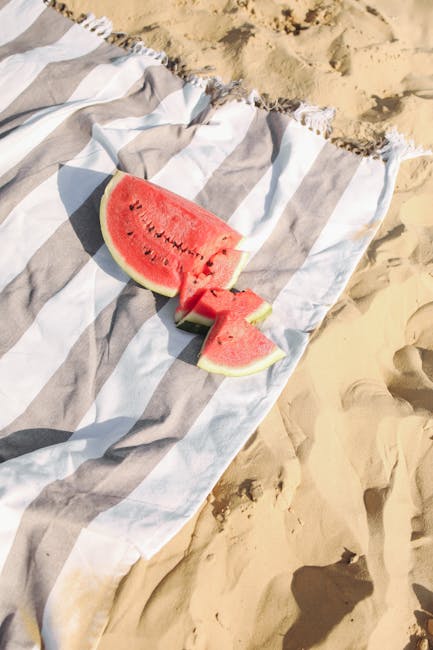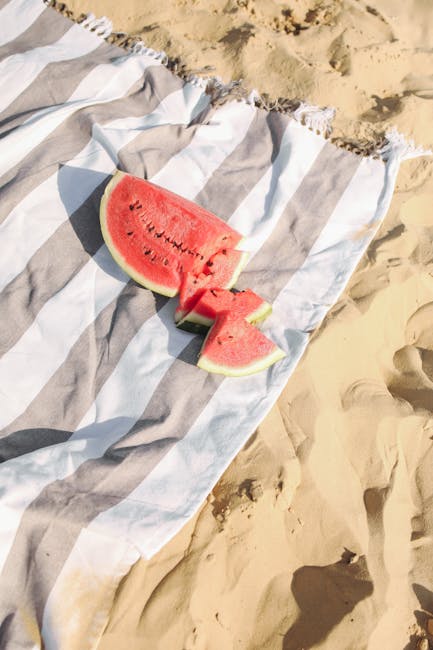Raspberry sorbet, a refreshing and vibrant frozen dessert, boasts a history as rich and complex as its flavour profile. While pinpointing its exact origin is difficult, the concept of frozen desserts dates back centuries. Ancient civilizations, including the Chinese and Persians, created early forms of ice cream and sherbet using snow and ice mixed with fruit and sweeteners. These early iterations laid the groundwork for the evolution of desserts like sorbet, which emerged as a distinct entity in the Middle East and eventually spread throughout Europe. The precise moment raspberries became a favored ingredient isn’t documented, but their natural sweetness and tartness made them a perfect candidate for this icy treat.
The popularity of sorbet exploded during the 17th and 18th centuries in France, where it became a staple of aristocratic gatherings and royal courts. French chefs refined the techniques, experimenting with different fruits and flavour combinations, solidifying sorbet’s place in the culinary landscape. Its popularity continued to grow, helped along by the development of more efficient refrigeration techniques. Today, raspberry sorbet, in particular, holds a significant place in culinary culture worldwide. According to recent market research, the global frozen dessert market is valued at billions of dollars, showcasing the enduring appeal of this simple yet sophisticated treat. Its simple elegance lends itself to both casual enjoyment and upscale dining experiences.
Beyond its commercial success, raspberry sorbet holds cultural significance in various regions. In many cultures, raspberries symbolise summer and abundance, making a raspberry sorbet a perfect celebration of the season. The vibrant pink hue of the sorbet itself adds a visual appeal, often used in elegant presentations and desserts. Furthermore, the relative simplicity of its ingredients – raspberries, sugar, and water – allows for variations and creative interpretations, making it a canvas for culinary innovation. This recipe will guide you through creating your own homemade raspberry sorbet, allowing you to experience the delightful taste and appreciate the rich history embedded in this beloved frozen dessert.
Ingredients and Measurements
Creating a truly delicious raspberry sorbet hinges on using high-quality ingredients and precise measurements. Don’t skimp on the raspberries – the flavor is paramount! We’ll be using fresh raspberries, but frozen ones can be substituted in a pinch, just be sure to let them thaw completely before proceeding. The sugar quantity is crucial for both sweetness and the sorbet’s texture; adjusting it will significantly affect the final product.
For this recipe, we’ll be making approximately 1 quart (about 1 liter) of raspberry sorbet. This makes a perfect amount for a small gathering or for individual servings over a few days. You can easily double or triple the recipe to suit your needs, but remember to keep the ratios consistent.
Here’s a detailed list of the ingredients and their measurements:
- 1 pound (450g) fresh raspberries: Choose ripe, but not overripe, raspberries. Overripe raspberries can lead to a bitter taste and a less vibrant color in your sorbet. Thoroughly wash and remove any stems before using.
- 1 cup (200g) granulated sugar: This amount provides a balanced sweetness. If you prefer a less sweet sorbet, you can reduce this to ¾ cup (150g). Using superfine sugar will help it dissolve more easily and prevent a gritty texture.
- ½ cup (120ml) water: This water is essential for dissolving the sugar and creating a simple syrup, which is the base of our sorbet. Using filtered water is recommended for the best flavor.
- 2 tablespoons lemon juice (optional): This adds a touch of acidity that balances the sweetness of the raspberries and prevents the sorbet from becoming too icy. Freshly squeezed lemon juice is always preferred over bottled juice.
- Pinch of salt (optional): A tiny pinch of salt enhances the sweetness and overall flavor profile of the sorbet. This is a professional chef’s secret!
Important Note: Accurate measurements are key to achieving the right consistency and flavor. It’s highly recommended to use a kitchen scale for weighing ingredients, especially the raspberries and sugar, for the most consistent results. Volume measurements can vary depending on the density of the ingredients.
Once you have all your ingredients measured and ready, you’re one step closer to enjoying homemade raspberry sorbet! Proceed to the next section for detailed instructions on the preparation.
Equipment List
Making delicious raspberry sorbet at home requires the right tools. While you might be able to improvise with some items, having the correct equipment will significantly improve your results and streamline the process. This list details everything you’ll need, from prep to serving.
For Raspberry Preparation: You’ll need a medium-sized bowl (approximately 2-quart capacity) for washing and sorting your raspberries. A fine-mesh sieve (at least 8-inch diameter) is crucial for removing seeds and ensuring a smooth sorbet texture. A sturdy potato masher or a food mill will help you break down the raspberries for optimal blending. Consider using a measuring cup (at least 2-cup capacity) and a measuring spoon set for accurate ingredient measurement.
For Mixing and Freezing: A high-powered blender (at least 1.5 horsepower) is essential for achieving a perfectly smooth and creamy sorbet consistency. A smaller blender might struggle with the volume and the icy consistency. Make sure your blender is capable of handling frozen ingredients to avoid damage to the motor. You’ll also need a sturdy, airtight container suitable for freezing (at least 2-quart capacity). Choose a container with a flat top for even freezing. A freezer-safe spatula is helpful for scraping down the sides of the blender and later, for scooping the sorbet.
Optional but Recommended Equipment: A kitchen scale provides accurate measurements for consistent results, especially if you are making multiple batches. A candy thermometer will allow you to monitor the sugar syrup temperature, ensuring optimal texture. If you’re aiming for a particularly professional finish, an ice cream maker (specifically one designed for sorbets) will give you a smoother, more aerated final product. Although not strictly necessary, an ice cream maker significantly improves the texture and reduces the need for manual churning.
Serving Utensils: Finally, don’t forget your serving dishes! Small bowls or dessert cups are ideal for individual servings, while a larger bowl works well for a family-style presentation. Spoons or small serving scoops are essential for enjoying your homemade raspberry sorbet.
In summary: While a basic setup is possible, investing in a powerful blender and a good quality freezer-safe container will elevate your sorbet-making experience. The optional equipment, such as a scale, thermometer, and ice cream maker, will further refine your technique and lead to even better results.
Preparation of Raspberries (Washing, Hulling)
Before you begin making your delightful raspberry sorbet, proper preparation of the raspberries is crucial for achieving the best flavor and texture. This involves careful washing and hulling, which we’ll detail below. The quantity of raspberries will depend on your desired sorbet yield; this guide assumes you’re working with 1 kilogram (approximately 2.2 pounds) of fresh raspberries.
Begin by gently rinsing your raspberries under cool, running water. Avoid using hot water, as this can cause the raspberries to become mushy and release excess water, impacting the final sorbet consistency. A gentle stream is best; a forceful spray can damage the delicate fruit.
To effectively rinse, place the raspberries in a large colander and hold them under the tap. Gently swirl the colander to ensure all the berries are thoroughly rinsed. Do not soak the raspberries, as this can lead to them absorbing too much water. A quick rinse of about 30 seconds to a minute should suffice.
Once rinsed, carefully examine the raspberries for any damaged or moldy berries. Remove and discard any that are spoiled. This step is essential to prevent unwanted flavors and textures in your final product. Discarding any damaged berries will significantly improve the quality of your sorbet.
Now, it’s time to hull the raspberries. This involves removing the green calyx (the little leafy cap) from the top of each berry. You can do this individually using your fingers, or for a faster method, consider using a small paring knife. However, be careful not to pierce the raspberries while removing the hulls, as this can cause them to leak juice and affect the texture of your sorbet.
If you’re working with a large quantity of raspberries, consider using a raspberry hulling tool. These tools are readily available online and in kitchen supply stores and can significantly speed up the hulling process. Once hulled, you’re ready to proceed with the next step in your raspberry sorbet recipe. Remember, careful preparation leads to a superior final product!
Sugar Syrup Preparation
Creating a perfectly balanced sugar syrup is crucial for a delicious and smooth raspberry sorbet. The right sugar concentration prevents ice crystals from forming, resulting in a creamy texture. This section details the process of making a simple syrup that’s ideal for our sorbet recipe.
We’ll be using a 1:1 ratio of sugar to water. This ratio provides the optimal sweetness and prevents the sorbet from becoming overly icy or grainy. For this recipe, we’ll make approximately 1 cup (200ml) of simple syrup, which is sufficient for the amount of raspberries specified in the main recipe. However, you can easily scale this up or down depending on your needs.
Ingredients:
- 1 cup (200g) granulated white sugar
- 1 cup (200ml) water
Instructions:
- Combine the sugar and water in a small, heavy-bottomed saucepan. A heavy saucepan helps prevent scorching and ensures even heating.
- Place the saucepan over medium heat. Do not use high heat, as this can cause the sugar to burn and caramelize, resulting in a bitter-tasting syrup.
- Stir the mixture constantly until the sugar is completely dissolved. This is important to ensure a smooth and even syrup. You should see the sugar granules disappearing completely.
- Once the sugar has dissolved, bring the syrup to a gentle simmer. You should see small bubbles forming around the edges of the pan.
- Continue to simmer for 2-3 minutes. This helps to further dissolve any remaining sugar and creates a slightly thicker syrup, improving the texture of the sorbet. Do not boil vigorously.
- Remove the saucepan from the heat and let the syrup cool completely. Allowing it to cool prevents the raspberries from cooking when added later.
- Once cooled, the syrup can be stored in an airtight container in the refrigerator for up to 2 weeks. Ensure the container is completely sealed to prevent contamination and maintain freshness.
Professional Tip: For a clearer syrup, you can gently strain the cooled syrup through a fine-mesh sieve before incorporating it into your sorbet. This removes any potential impurities or undissolved sugar crystals.
Important Note: Always use a clean saucepan and utensils to prevent bacterial contamination. Proper hygiene is essential when preparing food for consumption.
Combining Raspberry Puree and Syrup
This section details the crucial step of combining your homemade raspberry puree with the simple syrup to achieve the perfect balance of sweetness and tartness in your raspberry sorbet. The ratio is key to a delicious and refreshing final product. We’ll be aiming for a balance that highlights the fresh raspberry flavor without being overly sweet or sour.
Begin with your prepared raspberry puree. You should have approximately 2 cups of smooth, strained puree. If you have less, adjust the syrup quantity proportionally. If you have more, you may need to increase the syrup, but be mindful of avoiding an excessively sweet sorbet. Taste your puree – this will help you gauge how much sweetness you need to add.
Prepare your simple syrup. For this recipe, we’ll use a classic 1:1 ratio of sugar to water. Combine 1 cup of granulated sugar with 1 cup of water in a small saucepan over medium heat. Stir constantly until the sugar is completely dissolved and the syrup is clear. Do not boil the syrup for an extended period, as this can lead to caramelization and an unpleasant burnt sugar taste. Allow the syrup to cool completely before proceeding.
Gradually combine the puree and syrup. Slowly pour the cooled simple syrup into the raspberry puree while whisking continuously. This gentle incorporation prevents clumping and ensures a smooth, homogenous mixture. Start with about ¾ of the syrup and taste the mixture. This allows you to adjust the sweetness to your preference. If it needs more sweetness, add the remaining syrup a little at a time, tasting after each addition. Remember, you can always add more syrup, but you can’t take it away!
Consider your raspberries. The sweetness of raspberries can vary depending on the variety and ripeness. If you’re using particularly tart raspberries, you may need to increase the amount of simple syrup. Conversely, if your raspberries are very sweet, you might need less. Taste testing is crucial at every stage of this process.
Strain the mixture (optional). For an exceptionally smooth sorbet, you can strain the combined puree and syrup through a fine-mesh sieve to remove any remaining seeds or pulp. This step is optional, but it will result in a silkier texture. However, some people prefer the slight texture that the seeds provide.
Once you’ve achieved your desired sweetness and texture, you’re ready to proceed with freezing your raspberry mixture into delicious homemade sorbet! Remember, patience and attention to detail are key to sorbet success.
Freezing Process (Churning or No-Churn Method)
Making raspberry sorbet involves a freezing process, and you have two main options: using an ice cream maker (churning method) or skipping the machine altogether (no-churn method). Both methods yield delicious results, but they differ significantly in texture and effort.
Churning Method (using an ice cream maker): This method produces a smoother, airier sorbet with a finer texture. After preparing your raspberry mixture (as detailed in the previous section), chill it thoroughly in the refrigerator for at least 4 hours, or preferably overnight. This is crucial for achieving the best texture; a colder base freezes faster and more evenly. Once chilled, pour the mixture into your ice cream maker and churn according to the manufacturer’s instructions. This usually takes 20-30 minutes. Important: Don’t over-churn, as this can result in a grainy texture. Towards the end of the churning process, check the consistency; it should be soft-serve like but still slightly icy.
No-Churn Method (without an ice cream maker): This method is perfect if you don’t own an ice cream maker. However, it results in a slightly icier, less creamy texture compared to the churned version. After preparing your chilled raspberry mixture (again, chilling is vital!), pour it into a freezer-safe container. Ensure the container leaves enough headspace for expansion during freezing. Cover it tightly with a lid or plastic wrap, pressing it firmly against the surface of the mixture to minimize ice crystals forming on the top. Freeze for at least 4 hours, or until partially frozen. After 4 hours, remove the sorbet from the freezer. Using a fork or a whisk, vigorously break up any large ice crystals that have formed. This step is crucial for preventing a rock-hard sorbet. Return the sorbet to the freezer for another 2-3 hours, or until solid. Repeat the process of breaking up ice crystals every 2-3 hours for the first 6-8 hours for the best results, This helps to create a smoother texture despite not using a machine.
Regardless of the method chosen, allow the sorbet to sit at room temperature for 5-10 minutes before scooping. This softens it slightly, making it easier to serve and enjoy. If you find your sorbet is too hard, you can always briefly microwave it in short bursts (10-15 seconds at a time) until it reaches your desired consistency.
Professional Recommendation: For both methods, using high-quality raspberries and adjusting the sugar content to your preference is key to a delicious sorbet. Experiment with different types of raspberries (fresh, frozen) to find your favorite flavor profile. Also, consider adding a touch of lemon juice or other citrus to enhance the flavor and prevent ice crystal formation.
Recommendations
For the best results, use ripe, high-quality raspberries. Their sweetness will directly impact the final flavor of your sorbet. Avoid using overly soft or moldy berries, as this will affect both the taste and texture. Consider adding a squeeze of fresh lemon juice to enhance the brightness and prevent crystallization. This also helps to balance the sweetness of the raspberries.
Once made, your raspberry sorbet is best served immediately for optimal texture and flavor. However, if you need to store it, transfer it to an airtight container and freeze it for up to 2 months. Allow it to thaw slightly at room temperature for about 10-15 minutes before serving to achieve a scoopable consistency. Avoid repeated freeze-thaw cycles as this can affect the texture and potentially create ice crystals.
Serving suggestions are plentiful! Raspberry sorbet is a delightful palate cleanser after a rich meal. It makes a fantastic dessert on its own, or try serving it with fresh berries, a drizzle of honey, or a sprinkle of chopped nuts. Consider pairing it with a light sponge cake or shortbread cookies for a more substantial treat. A scoop of raspberry sorbet in a champagne flute adds a sophisticated touch to any celebration.
Complementary dishes include those with contrasting flavors and textures. The tartness of the sorbet pairs well with rich desserts like chocolate cake or brownies. It also complements savory dishes with a slight sweetness, such as grilled chicken or pork. Consider a pairing with a light vinaigrette salad for a refreshing summer meal.
Nutritional Information (per serving, approximate): Calorie count will vary depending on the amount of sugar added, but a typical serving of homemade raspberry sorbet contains approximately 100-150 calories. It’s a good source of Vitamin C and antioxidants, thanks to the raspberries. However, it’s important to note that added sugar will increase the calorie and carbohydrate content. For a healthier option, consider reducing the amount of sugar or using a natural sweetener like honey or maple syrup.





